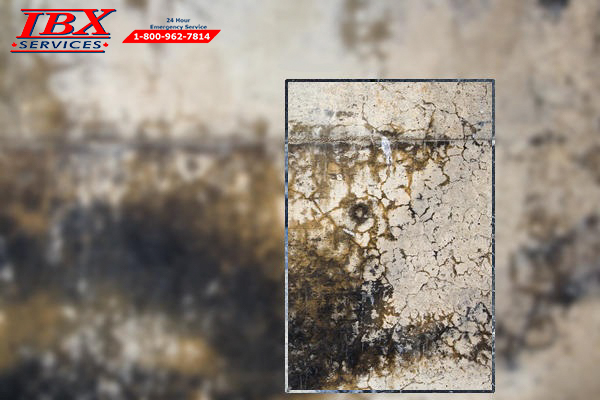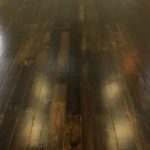
Indoor mold growth is a common problem and is most likely to occur during the fall and winter months.
Walls, clothes, books, toys and even CDs – nothing is sacred when it comes to mold growth. Its seemingly insidious growth can turn prized possessions into musty, moist sadness that only look fit for the garbage.
But for all its corrupting menace, to what extent should we be worried about mold when it invades our homes? If these are the effects that it can have on our possessions, what effects can it have on our bodies?
In this spotlight feature, we take a look at precisely what mold is, what causes it to grow, whether it is bad for our health and, if so, what can be done to stop it.
What is mold?
Molds are a form of fungus. There are many different molds and they can be found both indoors and outdoors. Molds spread through the production of spores, which are present in all indoor environments and cannot be removed from them – spores are capable of surviving in harsh conditions that otherwise prevent the normal mold growth.
Molds grow best in moist, warm and humid environments – easily created in the home during the winter. When mold spores land on a damp spot they can begin to grow, digesting the material they are growing on as they do so. Molds are capable of growing on a variety of different surfaces, including fabric, paper and wood.
Common indoor molds include:
- Alternaria – found in damp places indoors, such as showers or under leaky sinks
- Aspergillus – often found indoors growing on dust, powdery food items and building materials, such as drywall
- Cladosporium – capable of growing in cool areas as well as warm ones. It is typically found on fabrics and wood surfaces
- Penicillium – typically found on materials that have been damaged by water and often has a blue or green appearance.
Molds take a variety of forms and textures, appearing as white, black, yellow, blue or green and often looking like a discoloration or stain to a surface. They can also have a velvety, fuzzy or rough appearance, depending on the type of mold and where it is growing.
How does mold get into our houses?

Large patches of damp, such as those caused by leaks, provide an ideal environment for mold growth.
Mold spores, invisible to the naked eye, can be found everywhere, both indoors and outdoors. Spores make their way into the home either through the air or after attaching to objects or people. Open windows, doorways, and ventilation systems are all gateways through which spores can enter. Clothing, shoes, and pets can all facilitate the arrival of mold within the home.
Mold will only grow if spores land somewhere that has the ideal conditions for growing – places with excessive moisture and a supply of suitable nutrients. If this does not happen, molds do not normally cause any problem at all.
Mold can often be found in areas where leakages and flooding have occurred and near windows where condensation builds up. Wet cellulose materials are most supportive of mold growth, including paper products, cardboard, ceiling tiles, and wood products. Wallpaper, insulation materials, and upholstery are other typical launchpads for mold growth.
Mold growth is usually noticeable – it is usually visible and often produces a musty odor.
The World Health Organization (WHO) reports that 10-50% of indoor environments in Europe, North America, Australia, India, and Japan are estimated to be affected by indoor dampness. This figure suggests that mold could be a highly prevalent issue in locations spread across the world.
In North America, the US Environmental Protection Agency (EPA) states that “if mold is a problem in your home, you should clean up the mold promptly and fix the water problem.” But do the EPA recommend dealing with mold swiftly because of the damage it can do to the property? Or because of the damage, it could do to health?
Potential effects of mold on health
“Mold exposure does not always present a health problem indoors,” state the Centers for Disease Control and Prevention (CDC). “However some people are sensitive to molds.”
Meanwhile, the WHO says that a moldy environment is associated with and could worsen indoor air pollution – a risk factor for certain respiratory conditions:
“Excess moisture on almost all indoor materials leads to growth of microbes, such as mold, fungi and bacteria, which subsequently emit spores, cells, fragments and volatile organic compounds into indoor air. Moreover, dampness initiates chemical or biological degradation of materials, which also pollutes indoor air.”
Molds can produce a number of substances that can be harmful. Allergens, irritants and mycotoxins – potentially toxic substances – can affect individuals who are particularly sensitive to them.
TO REMOVE MOLD FROM YOUR HOUSES CONTACT US
In particular, the EPA state that exposure to molds can irritate the eyes, lungs, nose, skin and throats of individuals, even if they do not have a mold allergy.
Mold allergies produce similar symptoms to other allergies to airborne substances affecting the upper respiratory tract, such as pollinosis. These include:
- Blocked/runny nose
- Itchy nose
- Itchy throat
- Sneezing
- Watery eyes.
In addition, people with a mold allergy that also have asthma are at an increased risk of having their asthma symptoms triggered by a moldy environment, according to the CDC.
“Certain mold species can cause serious lung infections and scarring. For instance, in some asthmatics, inhaling the spores of a species of mold called aspergillus can lead to a condition called allergic bronchopulmonary aspergillosis, which can impact on the breathing.”
Individuals whose immune and respiratory systems are already weakened by chronic conditions would appear to be more susceptible to adverse effects from indoor mold. Prof. Spiro also told MNT that among patients with certain blood disorders, inhaling mold could even lead to fatal complications.
Although more conclusive evidence is required, the CDC reports that some research suggests there could be an association between indoor exposure to mold and the development of respiratory conditions in otherwise healthy people.
In 2004, the Institute of Medicine (IOM) reported that there was enough evidence to connect indoor mold with the development of upper respiratory tract problems in healthy people, and some evidence suggesting the same in healthy children.
More recently, the CDC state that exposure to mold early in a child’s life could be associated with the development of asthma. However, this theory is opposed to the hygiene hypothesis.
The WHO’s guidelines for indoor air quality explain the hygiene hypothesis – the theory that growing up in a hygienic environment can increase the risk of a person developing allergies. Several studies have found evidence supporting the hygiene hypothesis, but the evidence so far has been mixed.
As a result, the WHO concluded that there is “sufficient evidence of an association between indoor dampness-related factors and a wide range of respiratory health effects,” including asthma, respiratory infections, coughing, wheezing, and dyspnea.
While heavy exposure to indoor mold could plausibly play a causal role in the development of these health conditions, the WHO state that such an association has yet to be established conclusively.
Protection and prevention

Condensation on windows often leads to mold growth. Reducing humidity levels indoors or increasing ventilation can prevent it from occurring.
Despite the inconclusive nature of current research, the CDC and EPA recommend that any mold growth should be dealt with promptly.
Both organizations state that controlling moisture is most crucial to preventing mold from growing indoors. Acting quickly in the event of a leak or spillage is important, and drying areas within 48 hours of exposure to excess moisture should ensure that mold will not grow.
The level of humidity within the home is another important factor. Although it may not be immediately apparent, a high level of moisture in the air will promote mold growth. Condensation on windows is often a sign that humidity is high within a room.
Increasing ventilation by opening windows or using an extractor fan reduces the level of moisture in the air. Humidity can also be reduced in specific rooms by avoiding moisture-producing activities in them, such as drying clothes or using kerosene heaters.
When cleaning mold from hard surfaces, commercial products, soap and water or a heavily-diluted bleach solution can be used. Always dry surfaces that have been cleaned thoroughly to prevent mold from growing back.
Be wary of porous materials that have been affected by molds, such as fabric or wood. Mold can infiltrate these materials, may be impossible to remove completely, and could potentially grow back if the conditions are right. In many cases, it may be best to get rid of items such as these that have been affected for a long period.
Patches of mold that are larger than 3 ft by 3 ft may be best tackled by professional mold cleaning experts.
If you are worried about any potential exposure to mold or you believe that you are having associated health problems, it is recommended that you contact a health service provider.
Tidy house, tidy mind
While the evidence is inconclusive overall as to the extent that mold can affect health, there appears to be enough evidence available to suggest that people should be wary of it.
Even if it is the case that mold does not cause health problems, as some studies have suggested, the presence of mold indoors is indicative of a damp environment, which is known to be hazardous to health.
The impetus for getting rid of mold from the home is also much greater if the health of affected individuals is in any way compromised by chronic lung conditions or immune system impairment.
It may just be a case of reassurance, that having a home free of mold equals having a mind free of doubt and worry. Patches of odorous toxic-looking black mold can seem intimidating, and while it is possible that these might not be harmful to everyone, there is nothing like a clean, airy, and dry room to instill confidence about one’s health.











